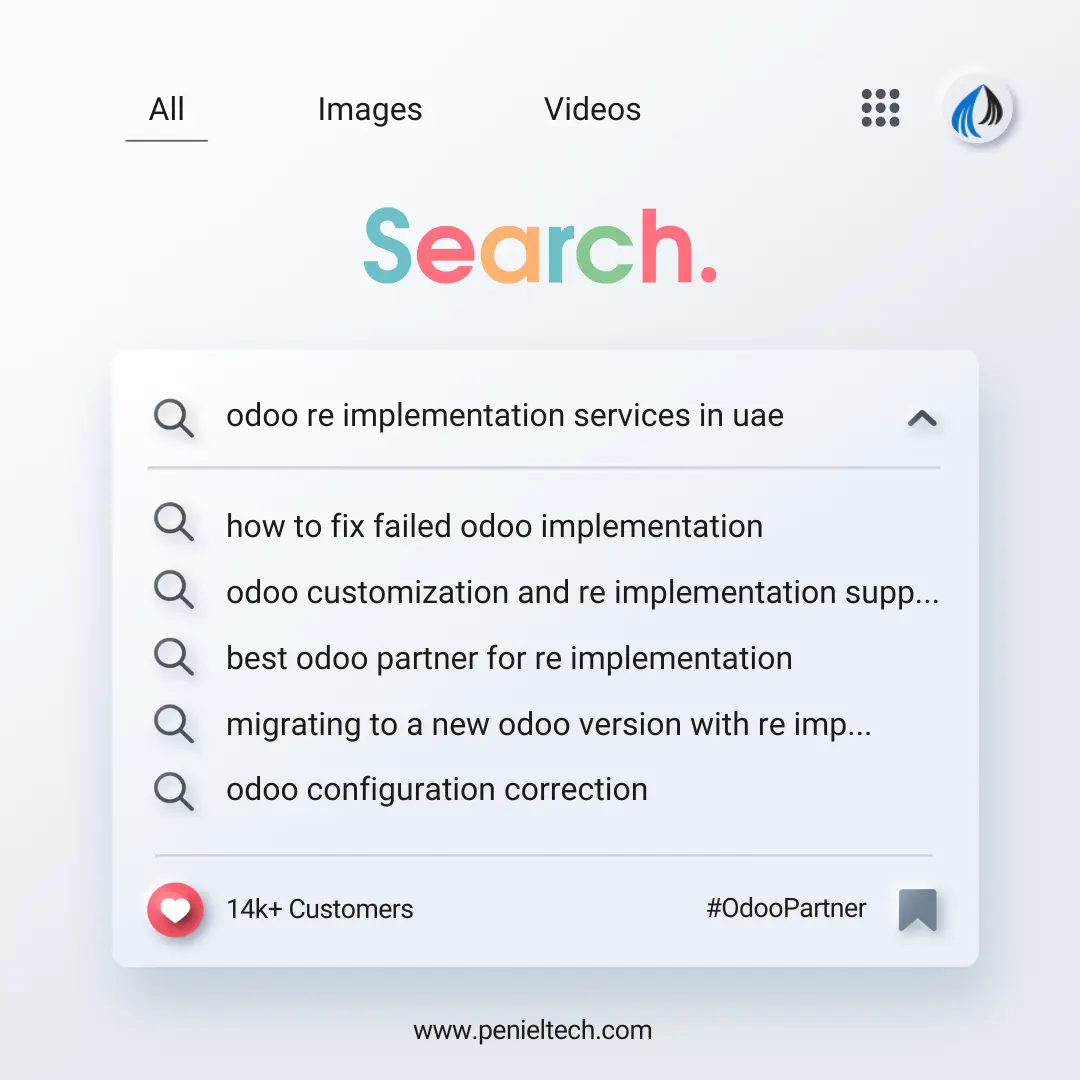Odoo ReImplement Services for the Middle East
When you first rolled out Odoo ERP, you must have expected a smoother and more efficient business. For a while, maybe that’s exactly what you got, but if you’re reading this, chances are something’s not quite right anymore.

Maybe the system isn’t working the way you hoped. Here’s the thing: Odoo is a powerful platform, but only when it’s properly set up for your business. If your current setup is causing more headaches than it’s solving, it might be time to seriously think about re-implementing Odoo.
In this Odoo Re-Implementation Guide, we’re going to have a look at 10 clear signs your Odoo ERP might need a do-over.
- Why Moving On from Legacy Odoo Systems Is More Important Than Ever
If your Odoo system has been sitting in your business for years without much attention, that’s not unusual. A lot of companies just keep using what they’ve got because, well, it’s there.
Struggling with System Performance?
Outdated or poorly configured Odoo slowing you down? It’s time to act.
But here’s the truth: old versions quietly become a problem. They slow you down, limit what you can do, and create invisible roadblocks that you might not even notice at first.
- The Silent Security Risk
Let’s be blunt, if you’re still on an old Odoo version like 14, 15, or 16, you’re sitting on a security risk that’s not going to fix itself.
When Odoo stops supporting a version, it means no more updates, no more bug fixes, and, most importantly, no more security patches. It’s more like locking your front door but leaving the window wide open.
Sure, everything might seem fine today. But when a security issue pops up, you’re on your own. And that’s not a place you ever want to be. So this is the time when you must go forOdoo Re-Implementation.
- Constant Downtime and Workarounds
If you and your team are regularly dealing with system crashes, slow-loading screens, or awkward manual fixes just to get things done, that’s your older version of Odoo ERP waving a big red flag.
Losing Data or Facing Errors?
Frequent issues are signs you need expert re-implementation.
Your system should always support you, not slow you down. When downtime and quick-fix workarounds become your “new normal,” it’s usually a sign that something’s broken deep in the way your Odoo was originally set up. At that point, patching won’t cut it. It’s time for a proper Odoo ERP Re-Implementation.
- Customizations
Your business is modern day by day but the older version of ERP may have multiple customizations, which are not only unnecessary but irrelevant too. Re-implementing a newer version can help you remove these because they have become a liability for you now.
- Missing Out on New Features
Ever seen the latest Odoo update and thought, “Wow, that would make our daily functions so much easier, too bad we can’t use it”?
That’s one of the most common signs you’ve outgrown your current system. When you’re stuck on an older version, you miss out on smarter tools, better dashboards, and simpler ways to get work done.
You’re literally working harder than you need to. Newer Odoo Version Upgrade offers features that can save you hours, improve accuracy, and just make your day-to-day feel less clunky.

- Increased Cost
Sometimes sticking with your old Odoo setup feels cheaper because you’re avoiding the upfront cost of re-implementation.
But here’s the kicker: those little fixes, temporary patches, and constant maintenance add up fast. Plus, what about the hidden cost of wasted time, system failures, and missed opportunities?
You might be surprised how often you have to end up spending more keeping your old ERP on life support than you would’ve spent upgrading.
- Missing Real Growth Opportunities
The new version of Odoo - Odoo 18 is built for businesses that want to grow.
If you’re stuck using older versions, you’re missing tools that could actually help your business scale, automate processes, and operate more efficiently.
In the meantime, your competitors are likely already moving forward with newer, faster systems.
- No Support, No Safety Net
When Odoo marks a version as End of Life, that’s it. No more support and no more security updates. If something breaks, it’s only your problem. (The EOL for Odoo 15 is in October 2024)
Sure, maybe you’ve been managing fine so far, but when issues eventually pop up, finding developers willing to patch up an unsupported system can get expensive. Fast.
Re-implementing keeps you within Odoo’s support cycle, which means you have experts on your side, not just Google searches and guesswork.
- Your Older System Doesn’t Go Well with Others
Modern businesses rely on integration. Whether it’s your CRM, your e-commerce platform, or your warehouse software, everything needs to connect.
If your current Odoo version can’t talk to other systems easily, that’s definitely going to slow you down.
No one wants their team to waste time doing manual data transfer or juggling disconnected tools. The newer Odoo version offers smoother, faster integrations with all kinds of third-party apps and services.
- Your System Can’t Grow with Your Business
Your business is growing, but is your legacy Odoo ERP growing with you? If adding new locations, new products, or more users is pushing your system to its limits, or if simple processes suddenly feel like they take forever, you’ve outgrown your setup.
Only a fresh Odoo re-implementation can give you a system that’s ready to scale with you.
Why Stick with Odoo and Not Jump to Another Cloud ERP?
There are plenty of cloud ERPs out there, but here’s why many businesses stick with Odoo Re-Implementation Services: it’s flexible and modular, and you can actually make it fit your unique way of working.
Most other ERP systems are either too rigid or way more complex than you need.
With Odoo, you can start small, scale as you grow, and only pay for what you actually use.
Plus:
- You can add or remove features as per your requirements.
- The user interface is clean and easy to get the hang of.
- Upgrades keep rolling in, so you’re not stuck again.
- It connects easily with third-party apps, payment systems, CRMs, and more.
Overall, Odoo is a system that can grow and evolve with you. That’s worth sticking with.
Features in the Latest Model of Odoo - Odoo 18
- Editor: list detection and suggested command buttons
- Debug menu: Model
- Company-switching shortcut
- Contacts: Search by address
- Error messages
- Dedicated progressive web apps and mobile app installation
- Filter records with mobile search panel
- Gantt view
- Image import
- Tour revamp
- List column width
- Mobile: Editor toolbar
- Occurrence sorting
- Readable URLs
- Search bar
- Passkeys
Industries
- Outdoor Activities
- Bakery
- Cleaning Service
- Dropshipping
- Food Truck
- Electrician
- Law Firm
- Marketing Agency
- Shoemaker
- Wedding Planner
- Tattoo Shop
Thinking About Re-Implementing?
Re-implementing Odoo isn’t about starting from scratch, it’s about getting it right this time.
That’s where Penieltech comes in. We’ve helped businesses who felt completely stuck with their outdated Odoo setups turn things around and finally get the ERP system they actually need.
What Re-Implementation Support we bring to the table:
- Hands-on Odoo expertise: We’ve seen it all, the good, the bad, and the badly set up.
- Smooth migration: We handle your data carefully without panic moves and last-minute surprises.
- Custom solutions: Your workflows, your way. We tailor the system to you.
- Ongoing support: We don’t disappear after the re-implementation is done.
Not Meeting Business Goals?
Your ERP should drive growth, not hold you back. Let’s optimize it.
Remember, re-implementation isn’t a failure. It’s actually a smart move if your current system is holding you back. It’s your chance to rebuild things the right way, with the right team, so your ERP finally supports your business, instead of dragging it down.
